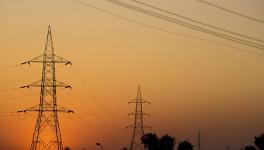Big Data Centers are Power-hungry, But Increasingly Efficient
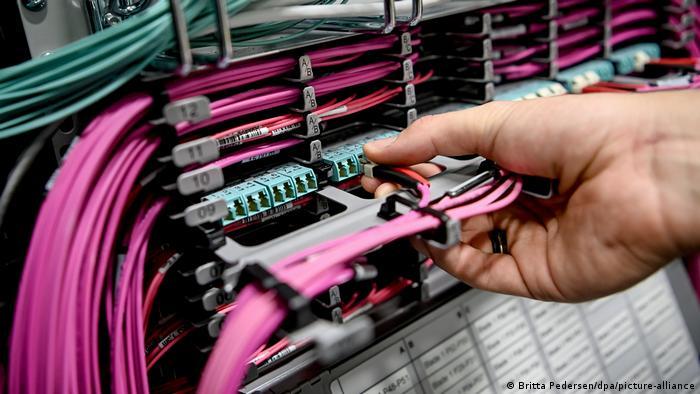
Massive data centers need massive amounts of energy to keep the data flowing
Whether binging "Squid Game" on Netflix or just posting a gif file on Twitter, both cause a chain reaction and use energy. That's not just on personal devices but in data centers scattered around the world where that information is stored.
Today nearly all the world's IP traffic goes through data centers. It is not just captured once. "For every bit of data that travels the network from a data center to end users, another five bits of data are transmitted within and among data centers," according to the International Energy Agency's "Data Centres and Data Transmission Networks" report released November 2021.
But simple Google searchers of the past are nothing compared with the big electricity bills behind cloud computing, artificial intelligence (AI), the rise of 5G mobile networks, self-driving vehicles or cryptocurrency mining. Streaming services alone could make up 87% of consumer internet traffic this year, says the report.
Not surprisingly, just a handful of companies are behind a huge share of this electricity use. At the top of the list are American Big Tech giants Amazon, Microsoft and Google, as well as Alibaba in China. Just behind them are Facebook and Apple.
The ongoing coronavirus pandemic has only fueled their dominance and use through remote work, video conferencing and file sharing through cloud services.
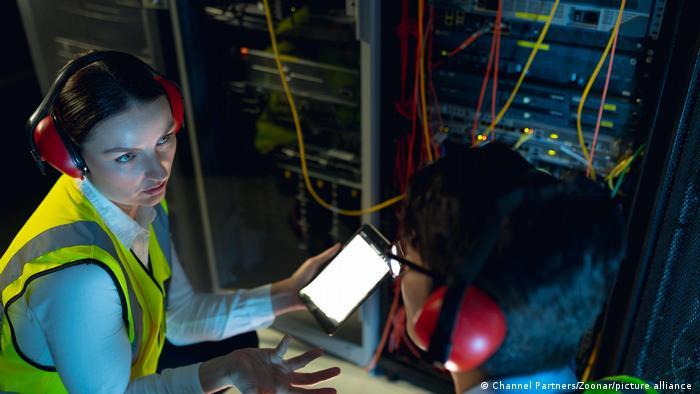
Big data centers are being built around the world to support increased digitalization
Data centers in big demand
But what is a data center? It is definitely not the overheating closet at the back of an office with one or two noisy servers. They are usually specially built nondescript boxy buildings with row upon row of specialized machines storing, processing and sending data to users.
Data centers "can scale from being small for an individual organization up to handling the traffic for global conglomerates such as Amazon with hundreds of millions of consumers and product data," Richard Blanchard, a lecturer in renewable energy at Loughborough University's School of Mechanical, Electrical and Manufacturing Engineering, told DW.
Data centers are popping up in more places because of increased digitalization and more regulation. At the same time, many businesses are getting rid of their own on-site servers and renting space on cloud servers in order to focus on their core businesses without worrying about IT issues.
In many cases, it is cheaper and more efficient to farm out the costs of purchasing and maintaining such equipment to outside companies. Not surprisingly, many data centers are "colocation" centers, which are shared by users and managed by specialist companies. These make up the majority of data centers, but it is the mammoth "hyperscale" data centers owned by Bit Tech companies that get the most attention.
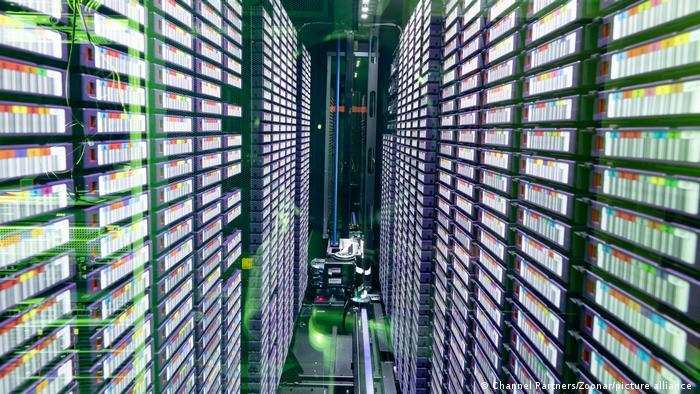
Once opened data centers don't need much staff to keep running 24 hours a day
The biggest of these data centers are the size of multiple football fields and have thousands of servers running 24 hours a day, 365 days a year. They are also quite practical since "economies of scale mean that larger data centers are more energy-efficient than smaller ones," according to renewable energy expert Blanchard.
Why do data centers use so much energy?
Currently there are 7.2 million data centers in the world, according to the German statistics office. The US has 2.670, by far the most. They are followed by the UK with 452, Germany with 443, China, the Netherlands, Australia, Canada, France and Japan.
Data centers need electricity to run their equipment. They also need a lot of it to keep the machines cool. Just how much electricity all these data centers use is up for debate.
Currently, many experts estimate that data storage and transmission in and from data centers use 1% of global electricity. This share has hardly changed since 2010, even though the number of internet users has doubled and global internet traffic has increased 15-fold since, according to the International Energy Agency.
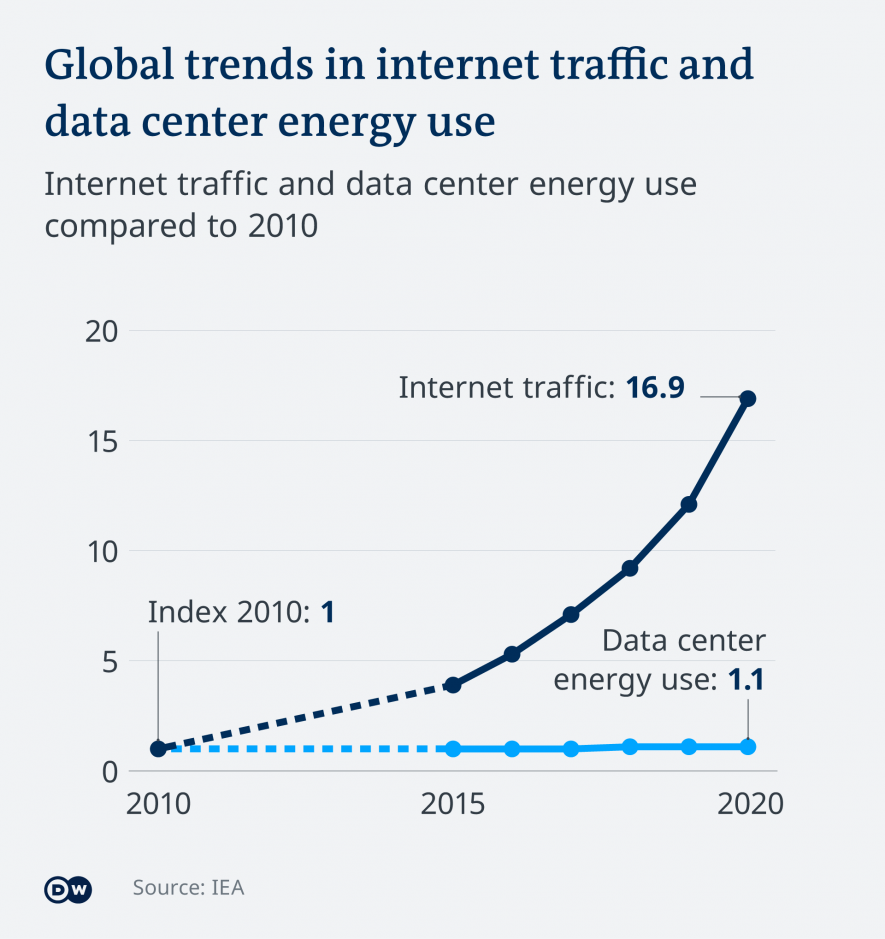
This isn't necessarily the case in Europe. A 2020 EU Commission study showed that data centers in the bloc's then 28 countries used 53.9 terawatt-hours in 2010. This increased to 76.8 terawatt-hours in 2018, which translated to 2.7% of the EU's total electricity demand.
The study expects consumption to reach 3.2% of total demand in 2030. Underlying calculations exclude cryptocurrency mining and data transmission networks themselves.
So far, more efficient hardware and innovations in the physical buildings and cooling systems have been able to offset growing electricity demand. But the study fears that demand is now so strong that growth can no longer be offset by hardware, software or infrastructure efficiency gains.
Yet big data centers are not only becoming more efficient, they are also being used more. A lot of the recent demand for data centers is from companies that once hosted their own in-house systems.
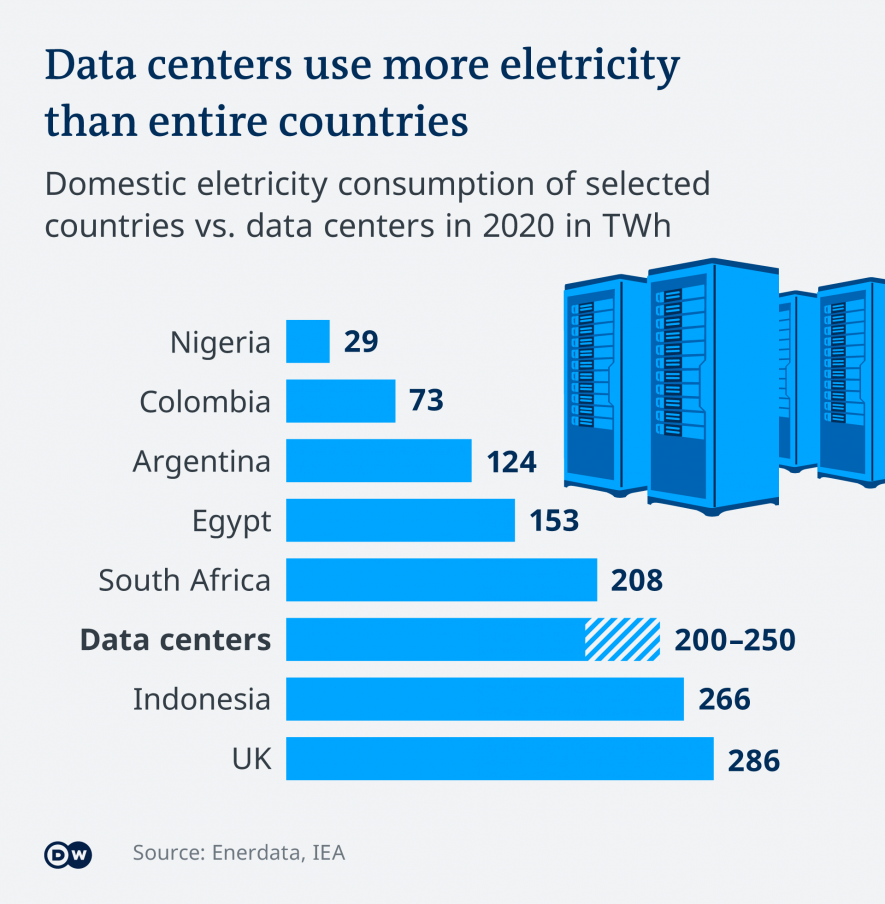
Companies take the lead
Moving many of these small, inefficient systems to big data centers has led to more efficiency. Moving them to even bigger hyperscale facilities can save more energy as it concentrates technology and know-how. Once a majority of companies have made this move though, keeping energy use in check will be harder as options for optimization are reduced.
Companies are taking note, especially Big Tech. Whether out of sustainability or a fear of a public backlash over their environmental impact, one way they are trying to tackle the problem is going after more renewable energy. Besides buying renewable energy outright, they are investing in wind and solar projects to produce it.
To reduce the environmental impact, companies are looking to low-carbon technologies. Google set up methods to reduce their energy bills by 40% by matching their power needs to the weather and also matching to consumer demand," said Blanchard. The company plans to run its data centers carbon-free by 2030.
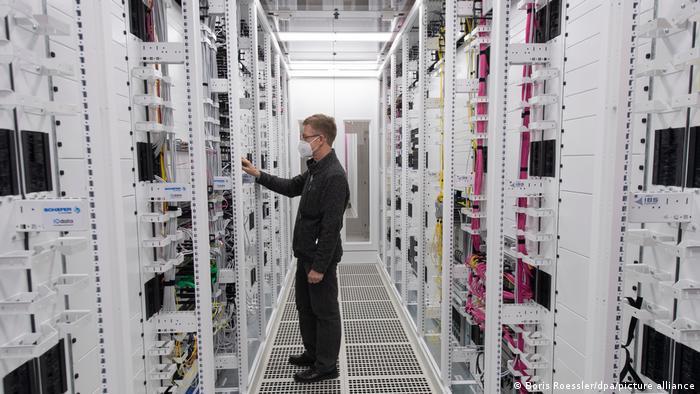
Streaming services alone could make up 87% of consumer internet traffic this year
In its sustainability report for 2020, Facebook announced that it had used a total of 7.17 million megawatt-hours of electricity for the year. Of that, 6.966 million megawatt-hours were for data centers, the rest was for its offices.
It was a 39% increase over 2019 and a 390% increase over 2016 when the company used 1.83 million megawatt hours of electricity. Despite this huge jump in energy use, Facebook says that 100% of its electricity now comes from renewable energy, well over the 44% they reported in 2016.
EU regulation coming down the road?
The European Union is not ignoring the problem. To fit in with its digital strategy, they have set the goal of climate-neutral data centers by 2030. Using best-practice ideas like efficient cooling systems, heat reuse, better infrastructure and renewable energy can go a long way toward achieving these goals. But can efficiencies keep up with growing demand for data centers and keep energy use from exploding?
Regulators and businesses have a big job ahead of them as demand continues to grow for social networks, online shopping, consumer devices and data centers. "The reason is connectivity of all types of systems that need to handle and process data. This will be a result of more people accessing online services as well as the range of organizations and services using these systems," Blanchard concluded.
Edited by: Hardy Graupner
Get the latest reports & analysis with people's perspective on Protests, movements & deep analytical videos, discussions of the current affairs in your Telegram app. Subscribe to NewsClick's Telegram channel & get Real-Time updates on stories, as they get published on our website.


















